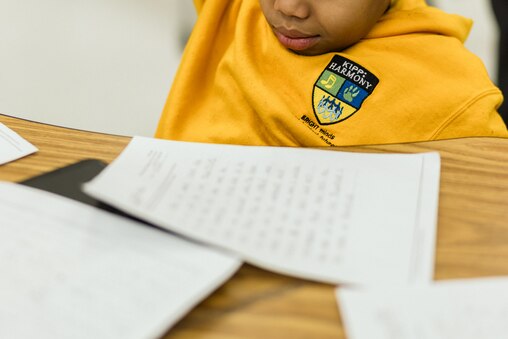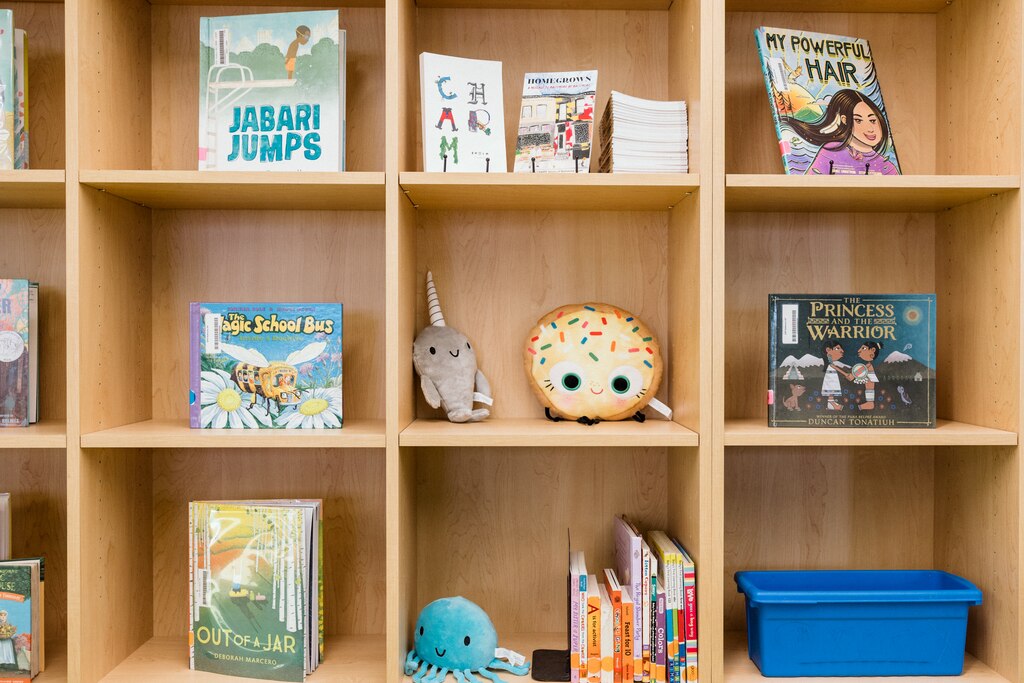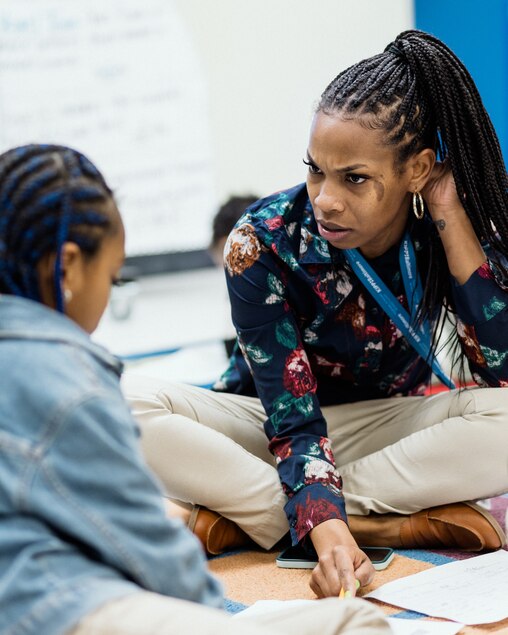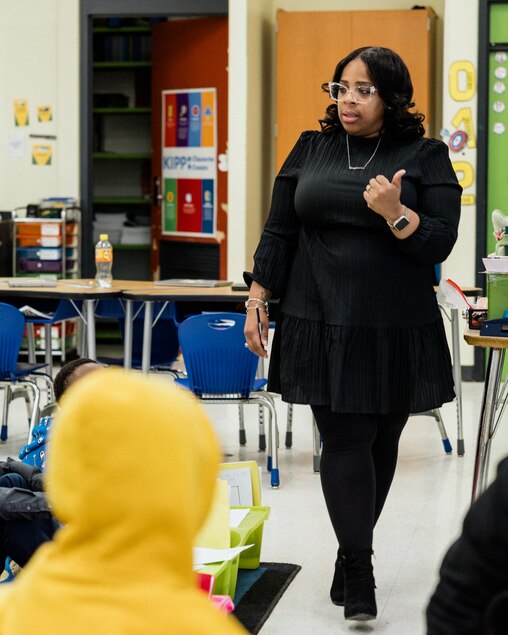There isn’t enough CRT in Maryland schools. That’s according to experts who evaluated classrooms across the state.
But it’s not critical race theory, the academic concept conservatives have attacked in recent years, that officials say is missing. It’s culturally responsive teaching.
This kind of instruction incorporates students’ cultural experiences, languages and identities into the learning process. Using students’ cultures can make lessons more relevant and engaging, education researchers have found. The term was first coined by multicultural education researcher Geneva Gay in 2000.
In Avonshae Rounds’ kindergarten classroom at KIPP Harmony Academy, a Baltimore charter school, culturally responsive teaching can look pretty simple. In a lesson about the letter “Y,” students sitting on a rug were instructed to turn to a classmate and discuss what “Y” word is the color of a banana. “Yellow!” they shouted.
The Baltimore Banner thanks its sponsors. Become one.

Rounds called for more examples. Some recognized the letter in their own name or noticed they had yellow in their shirts.
“That is culturally responsive teaching because they’re thinking about, ‘How does this make sense to me?’” Rounds said.
Read More
The kindergarten teacher knew since college that she wanted to address the learning gaps in certain demographics. Rounds learned through professional development programs that curriculum is often unrelatable to students of color. After getting to know her students more at KIPP, where 97% are Black, she infused culture in her lessons. Learning became more fun, she said, and students more engaged.
“When you bring culture into the classroom it lets students know, regardless of their background, that their culture is valued,” said Rounds.
Arts classes are often taught from a Western European lens, said Ryan Gholson, an assistant principal at KIPP. The same concepts can be taught with examples from Black culture, he said. If the topic is modern dance, famous dancers Judith Jamison or Alvin Ailey may be the examples.
The Baltimore Banner thanks its sponsors. Become one.


Baltimore culture is also brought in the mix. Social studies teachers draw from the locally created BMore Me curriculum as a way for students to learn about their city’s history and how it relates to their own identities.
But many Maryland teachers didn’t know what culturally responsive teaching was, said Simone Gibson, one of the directors of the Maryland Initiative for Literacy & Equity, or MILE. Her group organized the visits to Maryland classrooms, ordered by the state education department, to see how well teachers were using the science of reading, a teaching method backed by brain science. Culturally responsive teaching was part of the evaluation.
The science of reading and culturally responsive teaching work well together, according to Harvard University. Students are more likely to develop sustainable reading skills “when classrooms are student-centered, inclusive, and culturally responsive, when the curriculum is rigorous and intellectually challenging, and when educators have high expectations.”
Difficulty aligning culturally responsive teaching strategies with proper literacy strategies was common in schools across the state, according to MILE’s reviews.
“There’s this assumption that … you can only be culturally responsive if you’re working with poor Black children, which is completely inappropriate” Gibson said at a September state board meeting.
The Baltimore Banner thanks its sponsors. Become one.

The National Equity Project, an education reform organization, reported that creating a culturally responsive classroom includes teachers knowing their students well, building on students’ life experiences and creating a classroom learning community.
“Encourage students to care for one another and be responsible for each other inside and outside of the classroom,” the organization’s website stated.
Caitlin Thomas, KIPP’s math director, said that care and trust makes students more comfortable with making mistakes. They trust the teacher to lead them to success, she said.
Third grade teacher Sha’Nice Donohue said the student collaboration didn’t happen overnight. Students had to learn, for instance, to respectfully disagree. Two months later, students are adding onto each other’s ideas, which gets them talking about their identity and relating their own experiences to the lesson.


On Wednesdays, fellow third grade teacher Darricka Jackson starts class with about 20 minutes of circle time to talk about how it feels to be in class. During the first circle, the same four students’ names kept coming up.
The Baltimore Banner thanks its sponsors. Become one.
“I don’t like when you disrupt the class,” Jackson recalled a student saying to another. “I can’t hear Ms. Jackson and when it’s time to do my work, I don’t know what to do.”
The student being critiqued was initially defensive, but Jackson said it was important to hear how the student made others feel.
The third grade teachers want their classes to feel like family. It has helped students feel comfortable talking to the teacher as well as talking to and correcting their peers, Jackson said.


When her class was writing about Thanksgiving — the real history, not the myth — the goal was to practice writing complete sentences. As students sat on the center rug working from mini desks, Jackson presented a sentence a student wrote during the exercise. She asked the class what needed to be fixed. A couple of kids said the “W” in Wampanoag, an Indigenous tribe, wasn’t capitalized and a period was missing at the end.
The students’ comfort correcting one another and receiving feedback is a sign that practices like culturally responsive teaching are working, KIPP teachers said.
The Baltimore Banner thanks its sponsors. Become one.
But before teachers can build these kinds of relationships with and among students, they have to first look in the mirror, said Tieast Harris Winston-Bey, principal of KIPP Harmony Academy.
“No matter what you put in front of somebody, or what you teach them,” she said, “if they [teachers] haven’t done their own self reflection and battled their own bias … none of this matters.”
About the Education Hub
This reporting is part of The Banner’s Education Hub, community-funded journalism that provides parents with resources they need to make decisions about how their children learn. Read more.





Comments
Welcome to The Banner's subscriber-only commenting community. Please review our community guidelines.